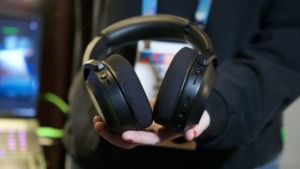China introduces new data on service robots as humanoid industry expands
China’s service robot sector sees growth as humanoid robots attract investment and government attention.

China’s National Bureau of Statistics (NBS) has unveiled a new data category for “service robots” alongside the existing data on industrial robots in its monthly industrial output report. This change highlights the country’s growing role in the robotics sector, which is rapidly expanding beyond industrial robots to include service robots, such as those used for cleaning, delivery, and healthcare.
Table Of Content
Service robots are experiencing rapid growth
China is already the leading global market for industrial robots, accounting for more than half of all installations worldwide. However, the country’s service robot market, which includes robots for professional, consumer, and medical uses, is also seeing remarkable growth. This is driven by the emergence of startups like Hangzhou-based Unitree Robotics and Shenzhen-based UBTech Robotics.
In the first two months of this year, the output of service robots in China surged by 35.7%, reaching nearly 1.5 million units. These robots, used for various tasks such as cleaning and delivery, outperformed industrial robots in both growth and total output. On the other hand, industrial robots saw their output increase by 27%, reaching 91,088 units during the same period.
China’s dominance in cleaning robots
One key area within the service robot market that has seen tremendous growth is cleaning robots. In 2024, Beijing-based Roborock overtook iRobot, the American leader, in global shipments. Market research firm IDC confirmed this shift, highlighting that four of the top five cleaning robot manufacturers are now Chinese: Roborock, Ecovacs Robotics, Xiaomi, and Dreame. iRobot ranked second, holding a 13.7% global market share, while Roborock led with 16%.
This growth in the cleaning robot sector reflects a broader trend in which Chinese companies are making significant strides in robotics. The increasing integration of service robots in daily life, spanning industries such as hospitality and education, contributes to a booming market with great potential.
Government support and investment in robotics
The Chinese government has been paying increasing attention to the robotics sector. In its recent work report, presented during the country’s annual legislative meetings, the term “embodied intelligence” was mentioned for the first time. This refers to the application of artificial intelligence in physical systems, such as robots.
Robotics is also attracting significant investment from venture capitalists. In the first two months of 2025 alone, humanoid robot developers secured nearly 2 billion yuan (US$276 million) in funding from 20 deals. This marks a significant increase from the 1.2 billion yuan raised in just four deals during the same period last year, according to data from market tracker ITJuzi.
With the growing focus on robotics, China’s role in the global robotics market is only expected to expand. The new data on service robots underlines the increasing importance of this sector, which is rapidly becoming a central part of the country’s economy.













